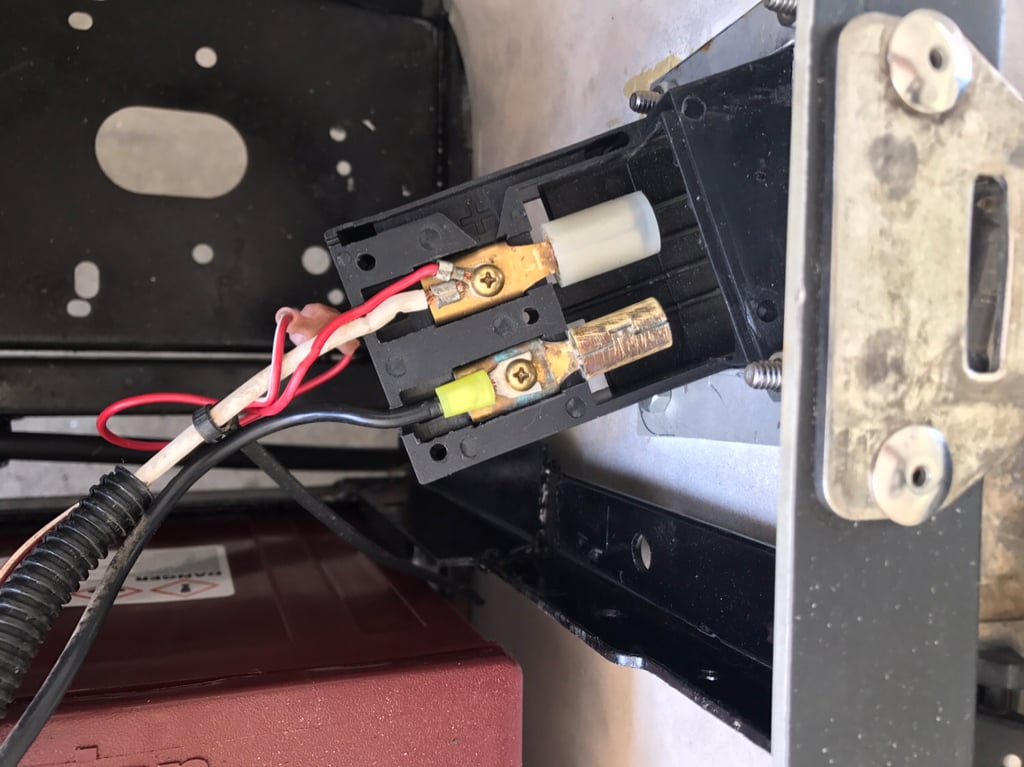-
Shopping Tools
-
Care & Maintenance
-
About
-
Dealer Login

On many golf carts, a reed switch hidden in the charge port acts as a magnetic safety interlock that disables the drive system whenever a charger is plugged in.
A reed switch is a tiny, sealed magnetic switch. When a nearby magnet moves into position, the metal “reeds” inside the glass capsule change state (open or close). On a golf cart, this motion signals the controller or ignition/run circuit to inhibit traction power during charging—so the cart can’t be driven by mistake.
The reed switch is a magnetically actuated sensor. The charger plug or receptacle typically contains a small magnet. Inserting the charger brings that magnet close enough to the reed switch to change its state instantly and reliably.
When you insert the charger, the magnet triggers the reed switch. That signal tells the cart’s control circuitry that charging is in progress. Depending on design, the switch either opens an enable path or pulls a controller “inhibit” line to a known state.
With the reed switch activated, the controller will not energize the main solenoid or forward/reverse circuit. In simple terms, pressing the pedal won’t move the cart, because propulsion is electronically locked out until the charger is removed.
This interlock prevents accidental driving while plugged in—a scenario that could damage the charger, receptacle, or wiring. It also reduces spark risk around batteries during charging. Paired with good charging habits, it’s a small component that delivers outsized safety benefits for golf carts.
Basic checks: Inspect the charge receptacle and wiring for corrosion, loose spades, or cracked housings. On the bench, a reed can be tested with a multimeter and a small magnet for open/close behavior. If faulty, replacement is preferred over bypassing to preserve the safety interlock.
Quality reed switches are commonly rated for hundreds of thousands to millions of actuations under low-current signal conditions. In a golf cart charge-port application—where the switch changes state only when you plug in or unplug—the cycle count is modest, so calendar life is often the limiting factor. With normal use and good weather sealing, many last 8–15 years or more. Lifespan is shortened by repeated physical shocks, high heat, water intrusion, or carrying currents beyond the intended signal level.
Does every cart use a reed switch? Not all models do. Some use micro-switches, hall sensors, or software-based charge detection. The function is similar: prevent propulsion while charging.
Can a reed switch fail closed or open? Yes. A failed-open reed may let the cart run when it shouldn’t during charge, while a failed-closed reed can disable the cart even after unplugging. Either fault warrants repair.
Is a reed switch polarity sensitive? No. It responds to magnetic field presence, not electrical polarity, though the wiring connected to it must observe the cart’s circuit design.
The reed switch is a small but vital safety device. It uses magnetism to signal “charging in progress,” disabling traction so the cart can’t be driven while plugged in. If you notice no-go conditions after unplugging, intermittent operation, or receptacle damage, inspect the reed and associated wiring. With correct parts and basic care, the switch provides years of quiet, reliable protection for modern golf carts.
